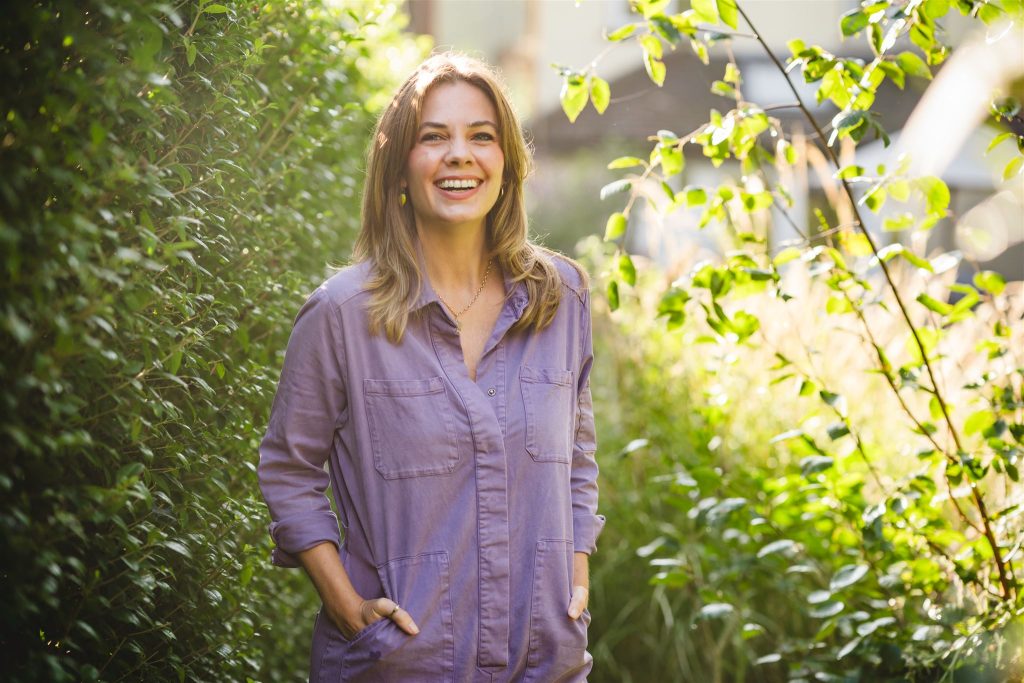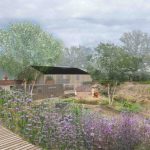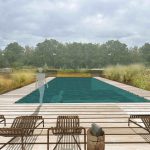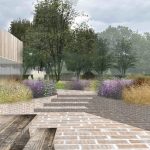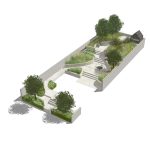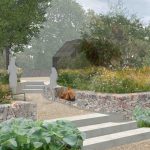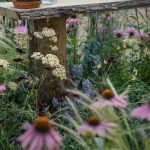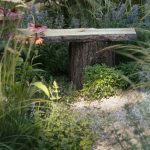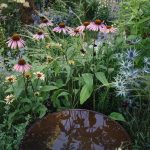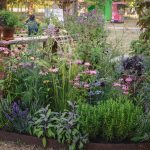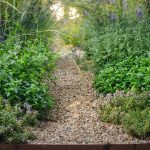Victoria Stanton
Victoria Stanton graduated from London College of Garden Design with Distinction and noted recognition from course leader, Andrew Wilson and guest judge, Tom Massey.
Victoria is passionate about creating uplifting gardens that champion sustainable principles, promote biodiversity and climate resilience and offer a deeper connection with the natural world for all ages. She works from her Surrey studio both on projects for her own business, Victoria Sprout, and as a freelance designer. Through social media, Victoria aims to educate and encourage a love of eco-friendly gardening to a wide audience.
From small courtyards to family gardens and re-wilding projects, Victoria is available to work throughout Surrey, Hampshire, London and beyond.
Victoria is incredibly enthusiastic and loves to design.
Sprout (verb) to start to grow.
Biography:
Victoria has always been a cheerleader for high impact independent brands. She has previously worked in communication roles in both the hairdressing and weddings industries, helping achieve award wins and national and international recognition. Since 2017, Victoria has simultaneously focussed on family and a career change and attained various relevant qualifications including an RHS Level 2 Certificate in Practical Horticulture, passing with Distinction.
Instagram – @sprout.surrey
In 1966, Peckham based artist Tom Phillips CBA RA set himself a task: to find a second-hand book for threepence and alter every page by painting, collage and cut-up techniques to create an entirely new version. The work spanned a number of decades and was titled ‘A Humument’. This garden in Peckham has been designed as an extension of Phillips’ work.
Key to the design are the curved, undulating shapes that wind their way up five terraces; the first with primary access to the garden from the basement kitchen, the second with a dining table for entertaining, the third for productive growing, fourth for a ‘meadow’, evening sun and a recessed open fire and the fifth for a workshop which overlooks the garden. To apply further artistry into the garden, the shapes and terraces are accentuated with a ‘dry stone’ wall.
Colourful, hardy perennials, fruit trees, a mini ‘meadow’, log piles and water encourage pollinators and help to support biodiversity.
Re-used Yorkstone slabs paired with locally sourced semi-porous self-binda gravel to infill gaps and the upper terraces help reduce waste and add visible modernity to the hard landscaping.
The dry-stone wall is to be made of building rubble – a contemporary take on a traditional stone wall which not only provides ecological habitats and additional seating, but reuses a waste material in a skilled, beautiful form.
Rain water is channelled in the dry-stone wall and stored in custom dip-tanks, using the topography of the site to advantage.
Designed and created in collaboration with fellow LCGD graduates Kate Hyslop and Gina Liverton-Brown, The ‘Sundowner Garden’ invites us to spend more time outside, helping us to unwind in the garden with a soothing drink at the end of a busy day.
Pollinator-friendly plants play a key role in attracting wildlife, further enriching the peaceful ambiance and fostering a healthy ecosystem. Deadwood log structures and aged oak planks provide elegant pedestals for the infusions, while also creating vital microhabitats for wildlife. These natural materials offer a simple yet effective way to support biodiversity, with logs serving as both shelter and food for various insect species, showing that beautiful, sustainable designs can be achieved without the need for expensive materials.
The garden features predominantly perennial shrubs, flowers and grasses – promoting sustainability through reduced soil disturbance, plant waste and resource requirements. There is a high proportion of evergreen species, which, along with providing winter structure, also provide continuous habitat and food sources for wildlife, enhance soil stability, and contribute to carbon sequestration, making them a valuable, low-maintenance option in sustainable gardening.
Biodiversity is fostered through a rich and diverse planting scheme that offers a variety of floral and botanical elements. Layered plantings create a mosaic of habitats, providing canopy, shelter, and groundcover, including shrubs, tall grasses, and a tree. The diverse flower shapes and inflorescences cater to pollinators of all sizes, while many plants are selected from the RHS’s Plants for Pollinators list, ensuring an abundance of nectar and pollen. With no “double” flowers, these plants are accessible and attractive to pollinators. Dried grasses and hollow stems offer nesting materials and essential overwintering sites for insects. A small water source for wildlife further supports the garden’s ecosystem.
The ‘Sundowner Garden’ is a haven for those who love to grow and harvest their own fresh produce, whether it’s for crafting unique drinks or creating delicious meals. It’s also an ideal escape for anyone seeking a tranquil sanctuary to unwind, reconnect with nature, and enjoy the calming atmosphere. Whether you’re an avid gardener, a cocktail enthusiast, or simply someone looking for a peaceful retreat with a herbal tea, this garden offers something for everyone.
